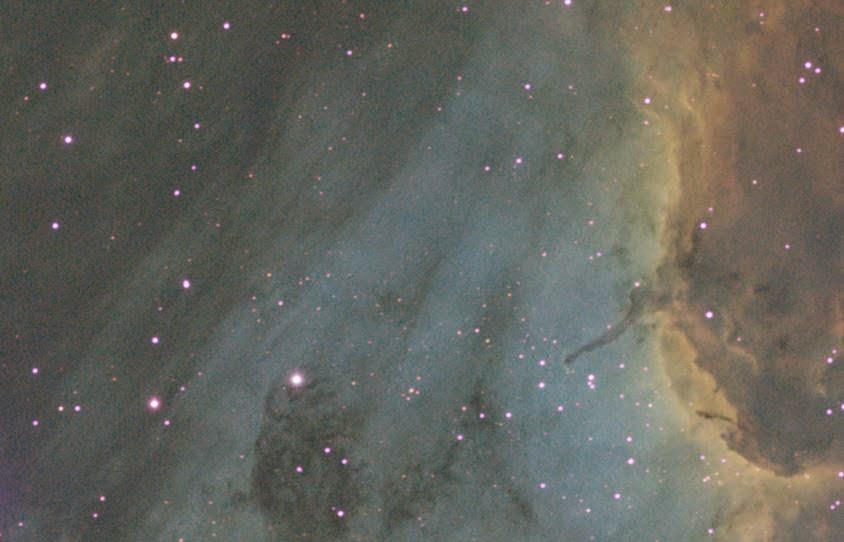I found it surprisingly easy to use TGVDenoise (I love the PixInsight tools that don't have a gazillion parameters...). Here is a closeup of an image of the Pelican Nebula:
Before noise reduction:
After noise reduction:
The noise reduction is noticeable but quite subtle - and some noise is still there. Looking closer at some details:
| Before: | After: |
You can see, that the fine details are still preserved!
Next, I stretched the image and got this:
As usual in narrowband images, the stars have a strong magenta tone. But I found a forum post for a PixelMath expression to remove these:
R: $T[0]
G: iif((CIEL($T)>MIN_BRIGHTNESS)||((min($T[0],$T[2])/(max($T[0],$T[2])>MAGENTA_DEFN))&&(mean($T[0],$T[2])>$T[1])),mean($T[0],$T[2]),$T[1])
B: $T[2]
Symbols: MAGENTA_DEFN = 0.9, MIN_BRIGHTNESS = 0.9
Now, the stars don't have their magenta color anymore. But also the dark areas of the image on the right have less of a reddish hue. The only problem I saw is that it creates noise around really bright stars:
Before:
After:
I asked on the Pixinsight forum if there is a way to avoid this.








No comments:
Post a Comment